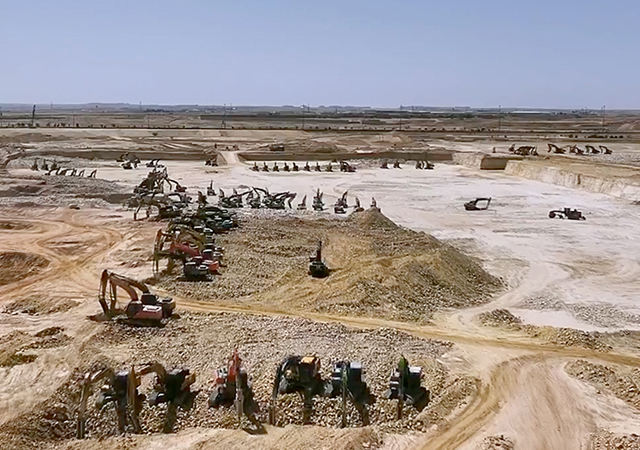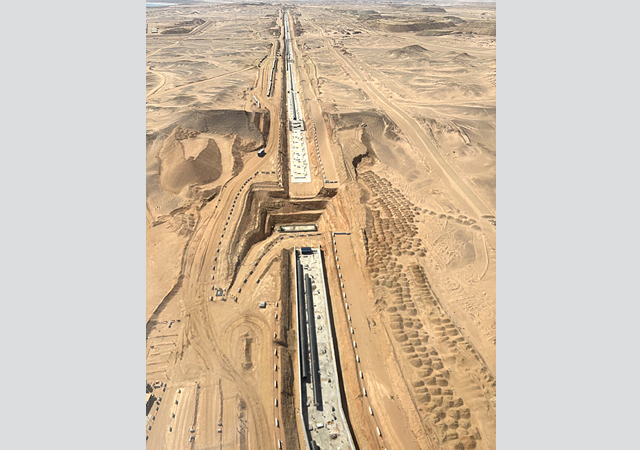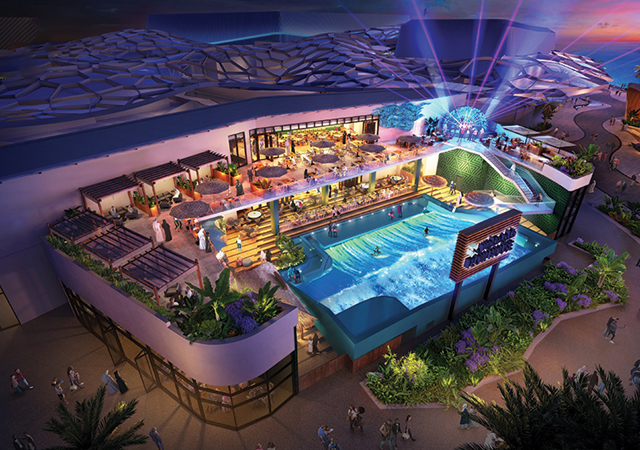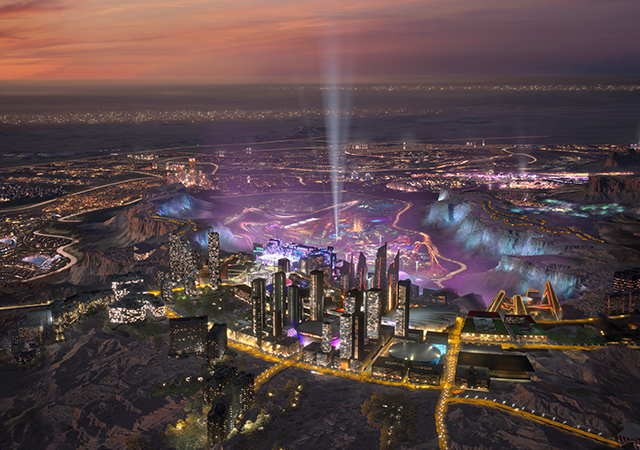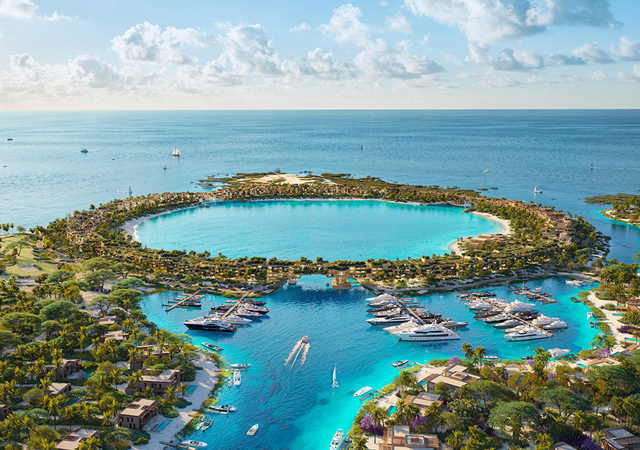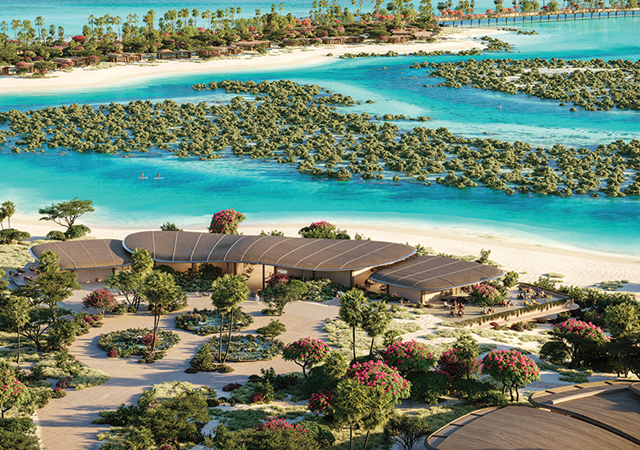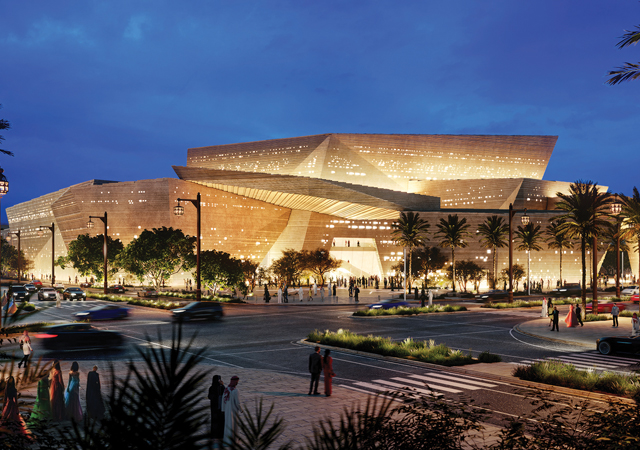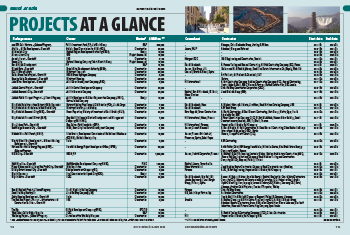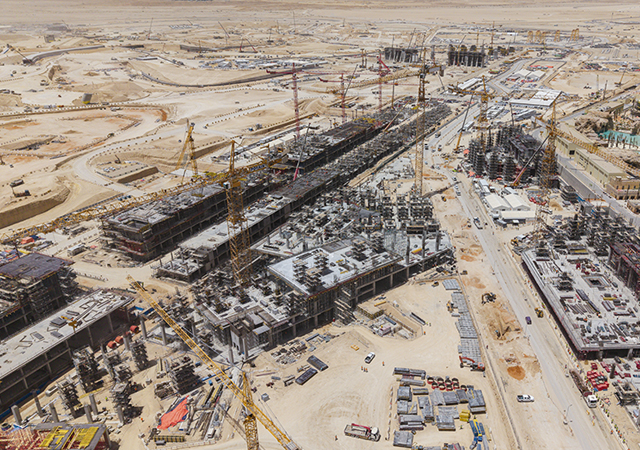
 BIG.jpg) Strategically located, the downtown area leverages its unique blend of sea, nature, and heritage themes to position itself as a tourist destination.
Strategically located, the downtown area leverages its unique blend of sea, nature, and heritage themes to position itself as a tourist destination.
In a bold push to diversify its economy, Saudi Arabia has commenced construction on yet another megaproject – the sprawling $23-billion Jazan City for Primary & Downstream Industries (JCPDI), a striking urban development along its Red Sea coast that aims to attract investment and boost tourism.
Construction is now under way on the downtown area of the JCPDI in Jazan on the southwest corners of Saudi Arabia, with site levelling and infrastructure works now in progress, according to project manager Parsons.
The Royal Commission for Jubail & Yanbu (RCJY), which is spearheading the 260-sq-km industrial megaproject, awarded SAR830 million ($221 million) in contracts last year to initiate the downtown development. The contracts cover site grading, roads, infrastructure, and housing.
A key component of Saudi Arabia’s Vision 2030 diversification strategy, this initiative aims to promote non-oil economic growth, enhance private sector contributions, and attract foreign direct investments.
Strategically located, the downtown area leverages its unique blend of sea, nature, and heritage themes to position itself as a tourist destination. It is the only special economic zone (SEZ) in the kingdom that has been designed as a regional tourism hub. The area’s proximity to the Abha mountains and the Unesco-recognised Farasan Islands further enhances its appeal, while JCPDI also stands to benefit from its proximity to mangroves, reinforcing its potential for sustainable development.
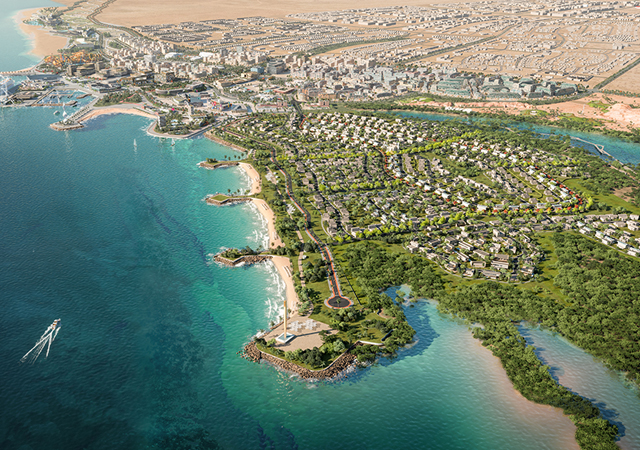 |
|
An aerial perspective of the $23-billion Jazan City for Primary & Downstream Industries. |
The coastal precinct will leverage its proximity to the Red Sea, mangroves, dunes and the Farasan Islands. Plans include an aquapark, conference and exhibition centre, amusement park, shopping mall, marina and yacht club, parks and recreation area, beach resort, and various hotels and housing options, targeting both residents and tourists.
These assets are designed to serve as an economic growth hub for both the local and regional economy and contribute to the growth of tourism in the region.
Parsons, working with RCJY as an integrated management team, is overseeing masterplanning, design, and construction of the 5.6-sq-km downtown area for JCPDI which is being developed as a resilient, future-ready city, advancing economic, environmental, and innovative objectives. The downtown area is designed to provide amenities to its 100,000 residents, tourists arriving by cruise ship, road, and air travel as well as Jazan’s wider population of 3.2 million people.
The multi-year programme operates within a structured five-year work plan focused on systematic progress and alignment with key strategic objectives. Parsons is leading a diverse array of projects that collectively form the backbone of JCPDI’s city development. In addition to the downtown development, these mega projects include waterfront development, complete city infrastructure and wet utilities, buildings, power substations, rough grading, and landscaping.
Aiming to establish itself as a world-class smart industrial city, JCPDI will be equipped with cutting-edge infrastructure designed to attract both local and international investors, according to Parsons.
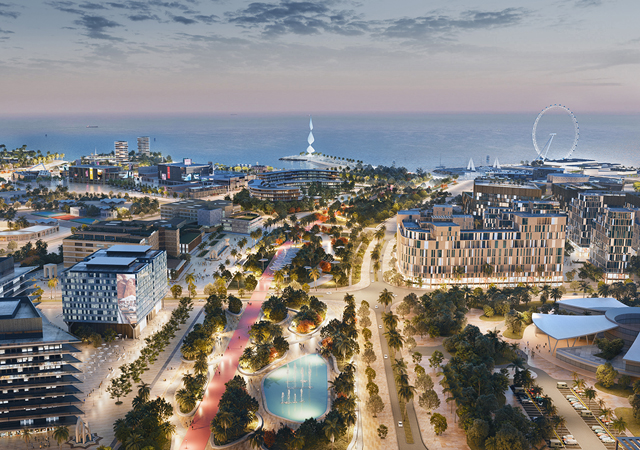 |
|
Plans for the downtown area include an aquapark, conference and exhibition centre, amusement park, shopping mall, marina and yacht club. |
Sustainability
Supporting JCPDI’s sustainable environmental protection strategy, the downtown development includes a 1-sq-km Mangrove and Ecological Buffer to conserve existing and future mangrove areas. This strategy aims for city-level LEED (Leadership in Energy and Environmental Design) and Envision certifications, creating a resilient, environmentally friendly, and livable urban environment.
JCPDI’s efforts have already begun to receive recognition: In October last year, Jazan City for Primary and Downstream Industries announced that it has become the first industrial city in the Middle East to achieve LEED Platinum certification in its planning and design stages. LEED Platinum is the highest accolade in the LEED for Cities and Communities framework, granted by the US Green Building Council (USGBC).
The LEED Platinum certification not only bolsters JCPDI’s status as a premier industrial hub but also reflects its adherence to exceptional engineering and construction standards across its buildings, housing projects, and infrastructure developments. This significant recognition underscores JCPDI’s commitment to sustainable design and energy efficiency, highlighting its proactive approach to environmental stewardship and positions it as a leader in promoting sustainable industrial practices in the region, according to Parsons.
Among other key initiatives being pursued are:
• Using renewable energy sources in all buildings to generate 15 per cent of their power, reducing carbon emissions;
• Maximising green spaces and vegetation to improve air quality, biodiversity, and urban aesthetics;
• Implementing dust mitigation and soil improvement techniques.
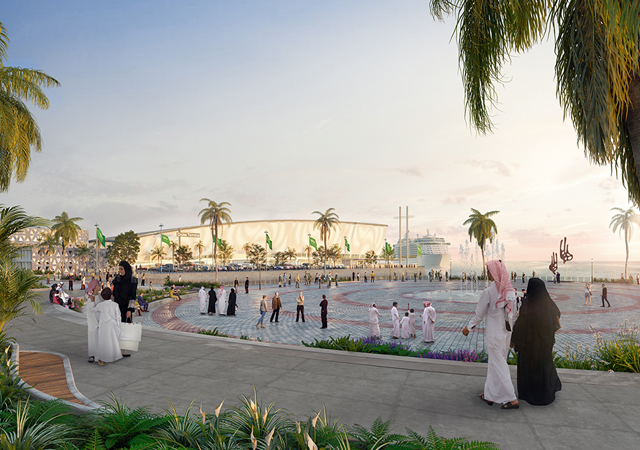 |
|
An artist’s impression of the amphitheatre in the downtown area. |
The 15-Minute City Model guarantees essential services and amenities are within a short walk or bike ride, reducing vehicle dependence and fostering community.
Additionally, a 133-ha mangrove reforestation project aims to plant over 20 million mangroves, enhancing coastal resilience, water quality, and marine ecosystems. The plan also seeks LEED certification for all Royal Commission individual building projects, ensuring high environmental performance and sustainability standards.
Parsons is currently investigating options to reduce costs and maximise capital investment by studying alternative methods for asset construction and location. Additionally, the company is conducting value engineering workshops on projects at the 30 per cent design stage to guarantee optimal efficiency and effectiveness in project execution.
At JCPDI, Parsons says it is adopting a top-down approach to integrating digital and smart solutions, focusing on Building Information Modelling (BIM). By utilizing extensive digital and non-digital data, it is developing a comprehensive city-wide digital twin, providing real-time insights such as clash analysis, metrics, economic feasibility studies, and data for strategic decision-making.

















.jpg)













 (1).jpg)














































